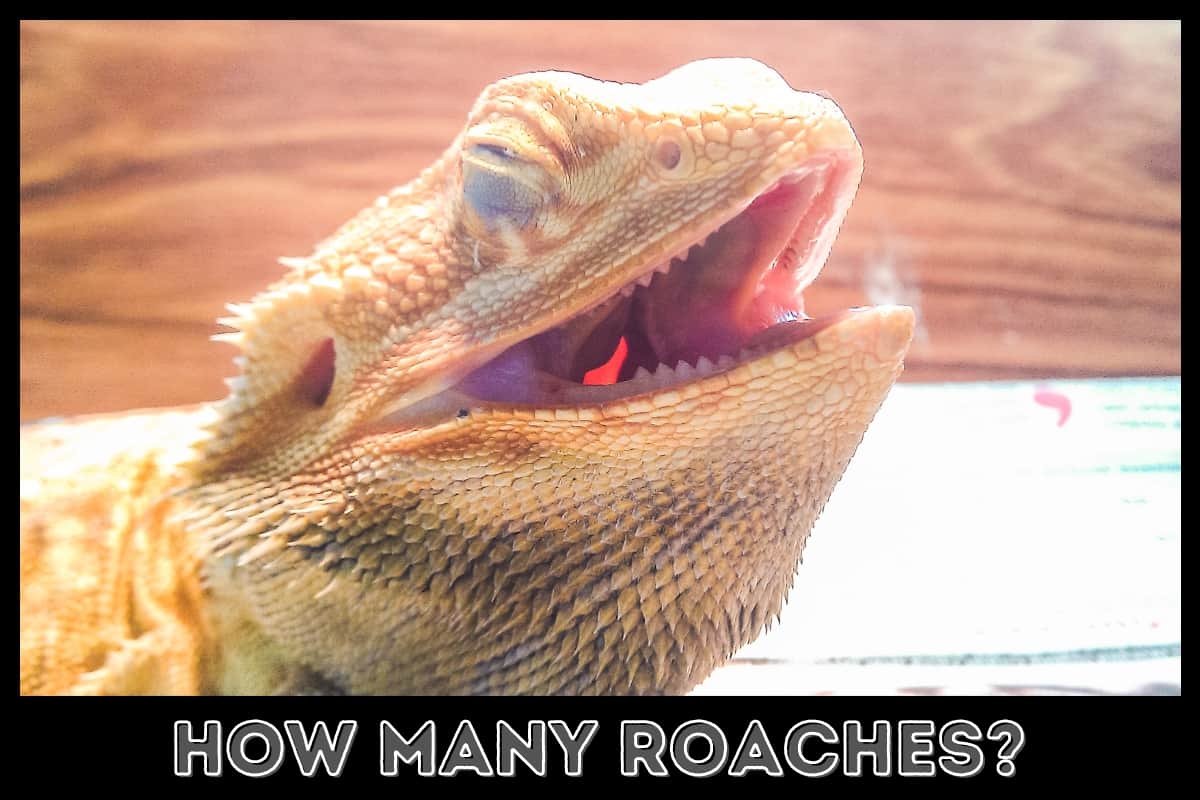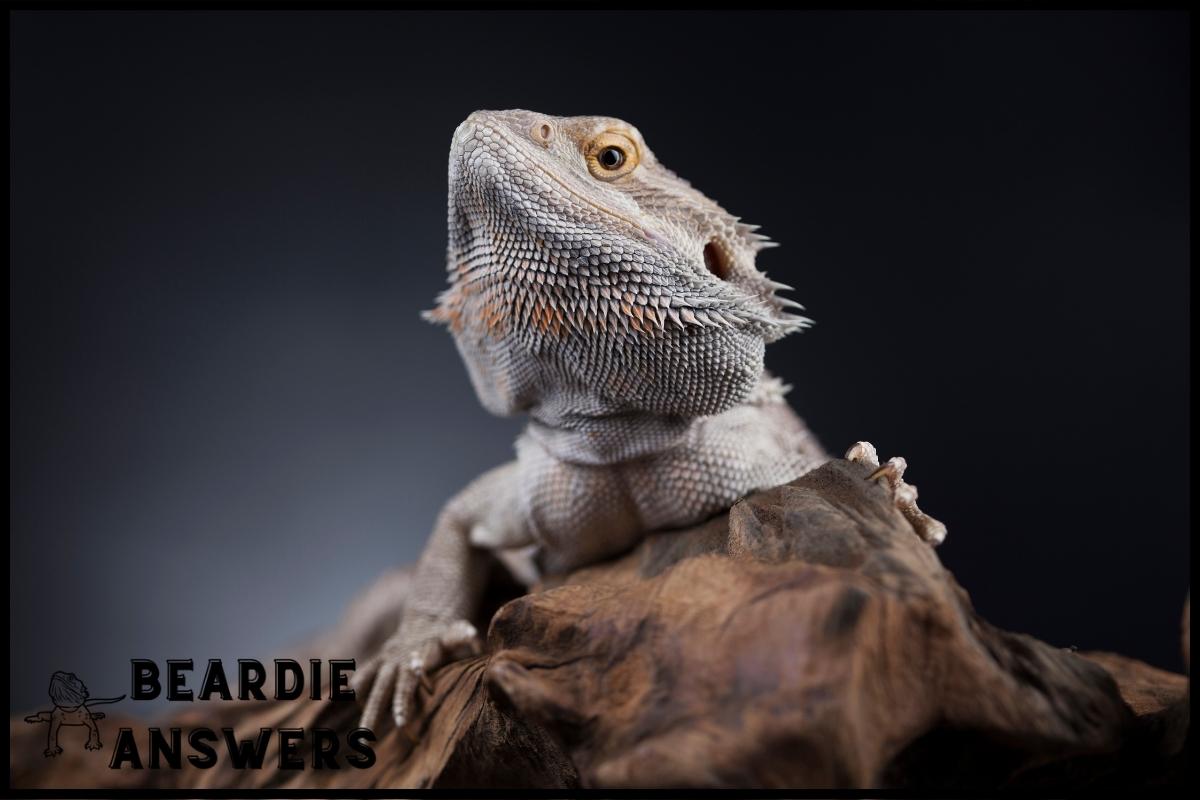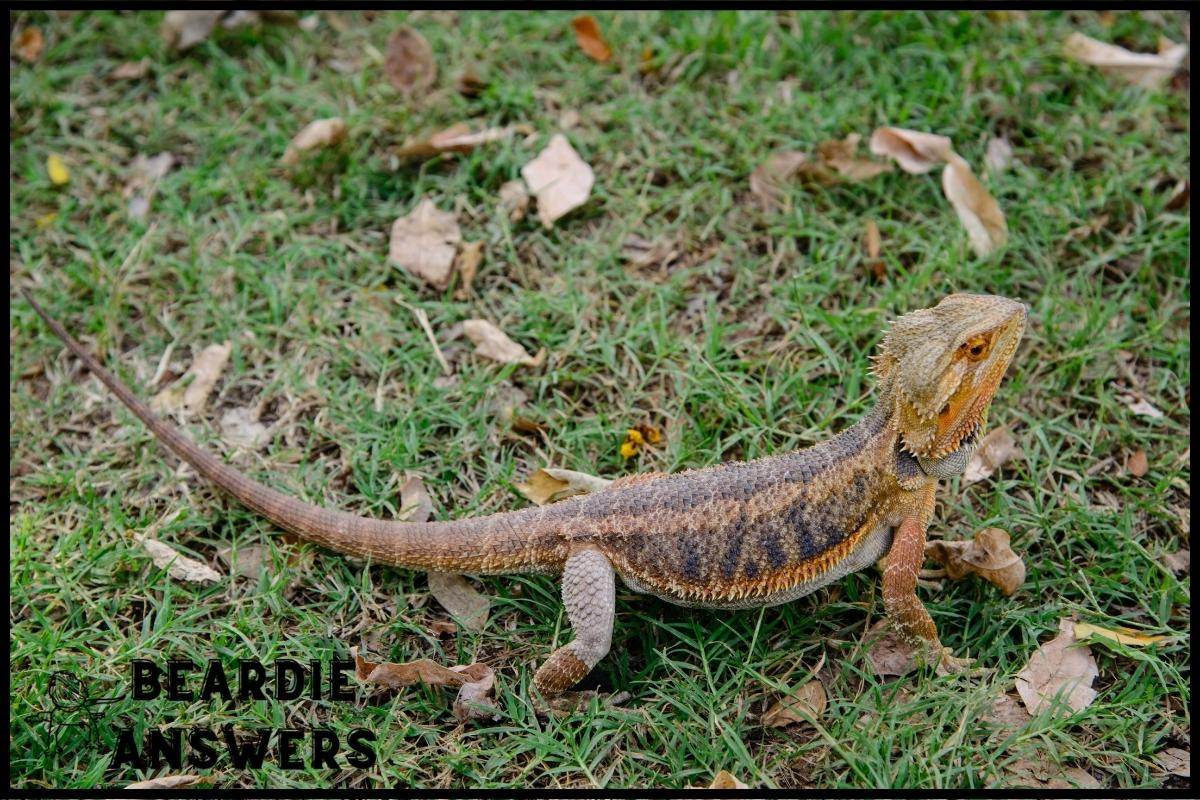It is important to know the right amount of roaches that your bearded dragon should be eating per day. Generally, the younger the dragon, the more roaches it should consume. Baby and juvenile dragons should be eating between 10-20 roaches per meal, 2-3 times a day, until they reach four months old. For full-grown adults, it is recommended that they eat three to five roaches two to three times daily.
What You'll Learn
How Many Roaches Should Be Included in a Bearded Dragon’s Diet
Baby and Juvenile
When it comes to younger bearded dragons, their diet should consist of more Dubia roaches than adults. Baby bearded dragons 3 months old and younger should consume 10-20 roaches three times a day until they’re 4 months old.
Young Bearded Dragon (1-3 months old) should eat 30 – 50 micro roaches (1/4-inch nymphs) three times per day. This is because young dragons need more energy to grow and develop compared to adults.
Providing a variety of feeders will help stimulate their appetite and encourage them to eat every day. It is important to keep a close eye on the health of your baby dragon and make sure they are eating enough to maintain a healthy weight.
Adults
Adult bearded dragons should eat around four to five roaches per day, spread out over two or three feedings. The number of roaches varies depending on the size of your dragon and the size of the roaches.
Factors That Affect The Number
Other than age and size, there are a few factors that will affect the number of roaches your bearded dragon should eat per day. The temperature of the environment and the availability of other food sources are two major ones.
Why Roaches Are and Important Part of the Diet
Roaches are an important part of the diet for a bearded dragon because they provide a number of essential nutrients and vitamins. Dubia roaches are an excellent source of protein and contain calcium, phosphorus, and vitamin A. This combination of nutrients helps to keep bearded dragons healthy and strong.
Dubia roaches closely mimics what the bearded dragon would eat in the wild, making it an ideal diet for pet owners who want to keep their pet as close to its natural diet as possible. As a bonus, they are also an inexpensive feeder option that can be obtained from most pet stores.
Excellent Source of Protein
Dubia roaches are an excellent source of protein, which is crucial for bearded dragons. If a beardie doesn’t consume enough protein, they will become lethargic and have quite a few digestive issues.
Contain Essential Vitamins and Minerals
Dubia roaches provide calcium, phosphorus, and Vitamin A, which are vital for healthy bones and muscle growth. These roaches are also high in Omega-3 fatty acids, which can help support a healthy immune system. They are also high in fiber, which can help to keep your bearded dragon’s digestive system functioning properly.
Closely Mimics What they Would Eat in the Wild
Offering roaches to your bearded dragon is a great way to simulate what they would eat in the wild. The calcium/phosphorus ratio is also close to what would be found in the wild. The small size of the Dubia roaches also makes them easy for your dragon to digest. Not only do they provide essential nutrition, but they can also help to encourage natural prey drive in your beardie.
Inexpensive Feeder Option
While crickets may be cheaper than Dubia roaches, they are not as nutrient-dense and they require more frequent feedings. Plus, Dubia roaches are much easier to store and maintain than crickets. Although crickets are essential, roaches are the better overall “bang for your buck”.
What to Do If Your Bearded Dragon Refuses to Eat Roaches
If your bearded dragon is refusing to eat the roaches, there are some things you can do to encourage them.
First, try to encourage their natural prey drive by offering live Dubia roaches instead of pre-killed or frozen ones. You can also provide variety by offering them different types of food such as crickets or other insects. If that doesn’t work, you can try to use feeding aids or toys to stimulate their appetite.
Bearded dragons won’t eat roaches that are too big, so make sure that the roaches you offer are of the appropriate size.
Encourage Natural Prey Drive
Bearded dragons are predatory animals, and encouraging their natural prey drive can be beneficial when trying to get them to eat.
Try offering a live roach or two and watch your dragon as they hunt and chase the prey. This can help stimulate their appetite and make them more inclined to eat.
You can also try hand-feeding your dragon to help them become more comfortable with you and make eating a more enjoyable experience.
Provide Variety to Stimulate Appetite
While roaches are an essential part of the diet, you can offer other insects as well, such as crickets, locusts, and mealworms.
You can offer a variety of vegetables and other plant matter. Acceptable vegetables that should represent a high percentage of the diet include collard greens, mustard greens, turnip greens, dandelion greens, bell peppers, and squash. T
his variety will help stimulate your bearded dragon’s appetite and ensure they receive all the essential vitamins and minerals they need for optimum health.
Try Feeding Frozen Roaches
This might seem strange, and it can take a little bit of getting used to, but it can be an effective way to get your bearded dragon eating roaches again.
Frozen roaches have the benefit of being easier to handle and store than live ones, and they can also be easier for your pet to digest. They also retain more of their nutritional value than live insects.
It’s important to follow the instructions for defrosting the roaches correctly, as you don’t want the feeder becoming too soft or mushy. It’s also important to ensure that the roaches are fully defrosted before offering them to your bearded dragon.
Use Feeding Aids or Toys
If your bearded dragon still refuses to eat roaches, then you may want to try using feeding aids or toys. Toys like foraging boxes or cups can help encourage your bearded dragon to find and catch their food.
Another thing you can try is hand-feeding them, which can be a great bonding experience for both of you. This can help to stimulate their natural prey drive and get them interested in their food. Just be sure to only feed them the appropriate size roaches and supervise them while they eat.
Key Points
- It is important to remember that the number of roaches to feed a bearded dragon can vary depending on their age and size.
- Roaches are an important part of the diet as they are an excellent source of protein and contain essential vitamins and minerals.
- They closely mimic what bearded dragons would eat in the wild.
- Roaches are an inexpensive feeder option, so if your bearded dragon is refusing to eat them, try encouraging their natural prey drive by providing variety or using feeding aids or toys.

Hi! My name is Bryan, I am the “one behind the words” here are BeardieAnswers.com. I believe that providing quality care and nutrition is the best way to ensure the health of your pet. Every beardie is special and deserves the best care and attention. If you have questions about your bearded dragon, please don’t hesitate to ask! View My Full Author Page




